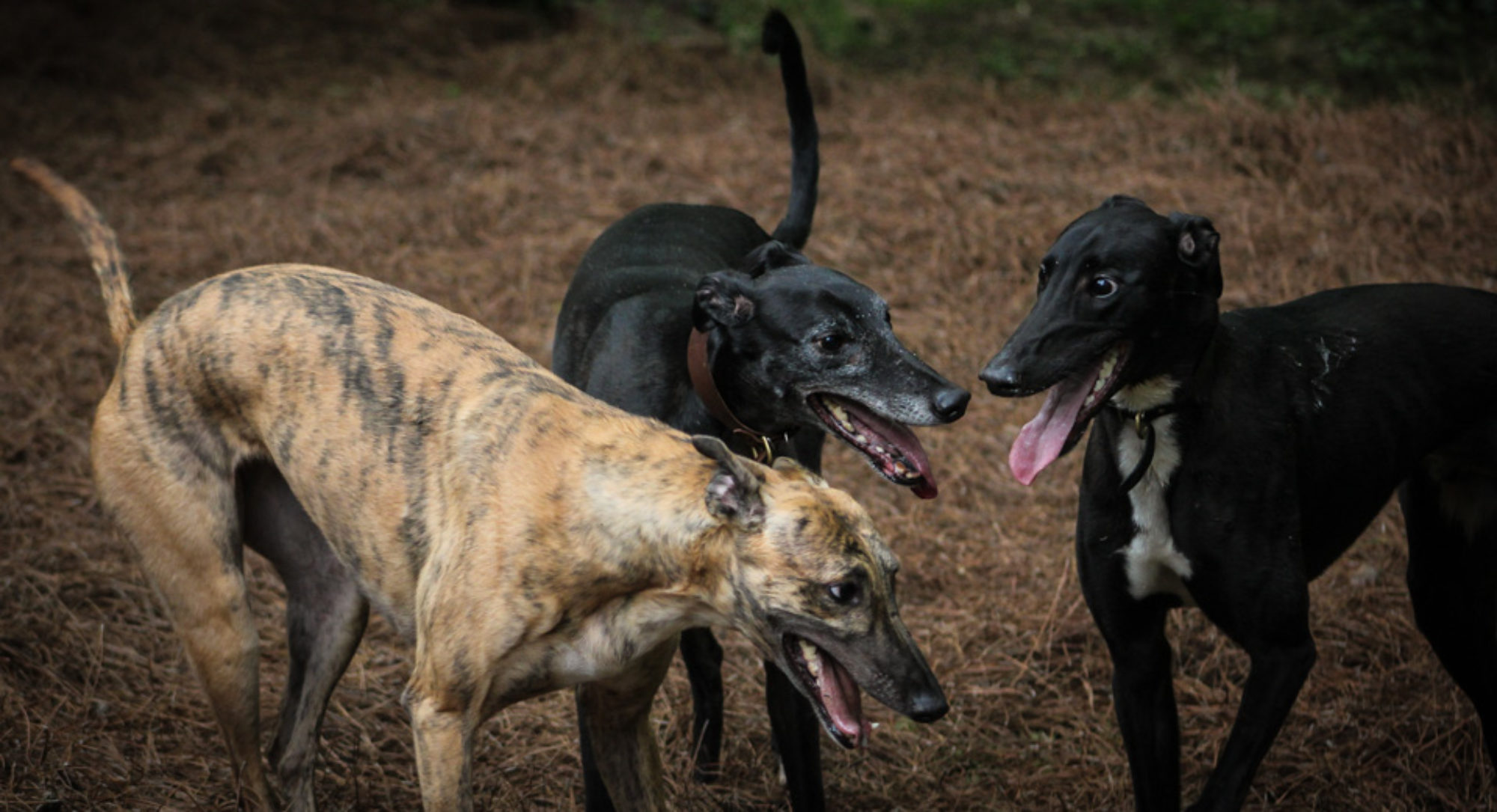By now you have probably noticed there are a lot of pictures of my dogs running and playing without leashes. I want to make it clear that generally speaking my Greyhounds are leashed. However, when we are in the country we allow our Greyhounds to be off leash. Our dogs are familiar with our property and understand their “boundaries”.
My Greyhounds did not come with off-leash manners and it took a lot of work to train off-leash manners. So how did I go about teaching my Greyhounds to come? Recall training is not a once and done type of command. Recall training has to occur frequently and you have to be ready to give you Greyhound a huge payload when they come to you vs. following that amazing coyote scent or chasing an armadillo.
At first we did a lot of work in the backyard. I would send a Greyhound out and allow them to start their sniffing. I would watch on the deck and when I noticed they were very interested in something I would call them and give them a high value treat—think canned dog food, mac&cheese, or raw tripe in a small container. After they had successfully completed this on a small scale I increased the distraction and the distance.
After mastering the backyard we would begin working on recalls at our local private dog park. This was a good location because it was safe but also full of new exciting smells and distractions. Again I would wait until they became interested in something and then call them giving them a huge payload.

We continued with this exercise until I felt they were ready to head to our country fields.
The boys were relatively easy to teach a recall to. Both Sashi and Jethro are huge momma’s boys. They are not going far from me. I can’t put on make-up without Sashi watching! The cord was not cut with the boys. Training a recall took a few huge payloads in a few different locations and they were hooked.
Darla was not that simple. Darla is a complicated Greyhound. She is very independent and when I first got her she could take me or leave me. However, she did want to hang close to Jethro and she loves food. The issues with her recall came when she wanted to do more independent activities and realized that she could wonder off from Jethro. This caused some stress—we thought all of our Greyhounds had great recalls but Darla did not.
Darla was deemed a flight risk and leashed. Clint and I wanted Darla to enjoy the independence of sniffing and hunting around our fields. We began reworking her recall and giving her another chance at off leash activities.
We took her to the fields and the first time she did well and stayed with me, I thought that she had it! The second time was not so pleasant. As soon as we unleashed her she was off. Fortunately she was with Sashi and he has an excellent recall. We called him and she remembered what she was supposed to be doing. And came running back to us for her reward. I want to note how important it was that we were happy and rewarded her when she came back. She did not do exactly what we wanted her to do but we want her to associated coming to us with happiness and rewards, not us being frustrated.

After this experience we knew we had more work to do. We tried her off leash again this past week in our fields. She did much better. I have learned that once she is off leash she is going to run like crazy. The difference this time was that when we called her she did a turn-face and came back to us, ready for her jackpot reward.
We will continue to do more and more off leash training with Darla and we will allow her more and more off leash time. Hoping to balance her training with her positive experiences.

No matter if you are considering allowing you Greyhound off leash or not, training your Greyhound to a recall is one of the most important things you can do. We have to remember that accidents do happen and the better prepared you are the better chance you have a good outcome. Good solid recalls take time. It is important to start slow and practice often. Sometimes regression is part of the learning process and should not be considered a failure but an opportunity for learning. Training you Greyhound should be a fun positive process for you and your Greyhound.
For more off-leash training tips check out Jennifer Bachelor’s Blog Never Say Never Greyhounds. This is the premier blog for training Greyhounds!










